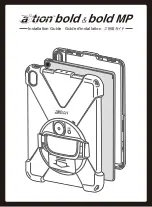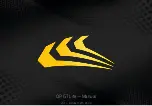
7 - Appendix
SMPTE Background
E-MU 1820M/1820/1212M PCI Digital Audio System
119
Stripe Mode
This mode is used to record SMPTE time code onto an audio track of another recorder.
SMPTE is output when the Start button is pressed in the System Settings menu and
begins at the time set by the Start Time setting. MTC is also simultaneously output from
the Sync Daughter Card MIDI out. SMPTE and MTC will continue to be output until the
Stop button is pressed. See
Striping SMPTE.
SMPTE Background
SMPTE time code was standardized way back in 1969 by the
S
ociety of
M
otion Picture
and
T
elevision
E
ngineers as a way to mark frame numbers on video tape.
Using SMPTE, a particular location can be precisely located by simply entering the
appropriate time code number which is expressed in Hours, Minutes, Seconds, Frames
and Subframes. This is possible because each frame of SMPTE time code contains
absolute location information expressed in digital form.
There are two types of SMPTE time code: Vertical Interval Time Code (VITC), which is
used on video tape and Longitudinal Time Code (LTC) or audio time code. VITC is
strictly used for video and has the advantage of being able to be read while the video
deck is paused. LTC can be recorded on the audio or sync tracks of video tape and can
thus be used in audio or video work.
Longitudinal time code is the type of SMPTE used on the Sync Daughter Card. It
contains 80 bits of information per frame. An audio SMPTE frame is divided into 80
“bit cells”. A voltage change during a bit cell period constitutes a digital “1” and no
change during a bit cell period constitutes a digital “0”. In addition to the location bits,
there are user bits that may contain information about tape reel numbers, bits dealing
with video information, and a 16-bit sync word at the end of the frame.
There are four types of SMPTE time code in general use: 24, 25, 30 frame-per-second
and 30 drop-frame. In general, you should choose one rate (30 non-drop is common in
audio) and stick with it for initial recording and later editing.
The four frame rates are all straightforward except 30 drop-frame. The 30 df rate came
about because the US color video frame rate is actually 29.97 frames/sec instead of 30
frames/sec. This adds up to an error of 108 frames each hour relative to “wall clock”
Types of SMPTE
Type
Use
Hours
Minutes
Seconds
Frames
24 frame
US Film
00-23
00-59
00-59
00-23
25 frame
Euro. Film + Video
00-23
00-59
00-59
00-24
30 drop-frame
US & Japan Color Video
00-23
00-59
00-59
00-29
30 non-drop
US & Japan B/W Video
00-23
00-59
00-59
00-29
Frames
Seconds
Hours
Frames Seconds
Minutes
Minutes
Hours
Start
Frame
End
Frame
10
20
30
40
50
60
70
80
80 Bit Cells per Frame
Bit
Cell
=0
=1
Bit
Cell
SYNC WORD
SMPTE
Time
Code
Summary of Contents for 1212M
Page 1: ...1820 1820 Owner s Manual Owner s Manual ...
Page 8: ...8 E MU 1820M 1820 1212M PCI Digital Audio System ...
Page 54: ...4 The PatchMix DSP Mixer Main Section 54 Creative Professional ...
Page 110: ...5 Effects E MU E Wire VST 110 Creative Professional ...
Page 116: ...6 Using High Sample Rates Overview 116 Creative Professional ...
Page 138: ...7 Appendix Internet References 138 Creative Professional ...
















































